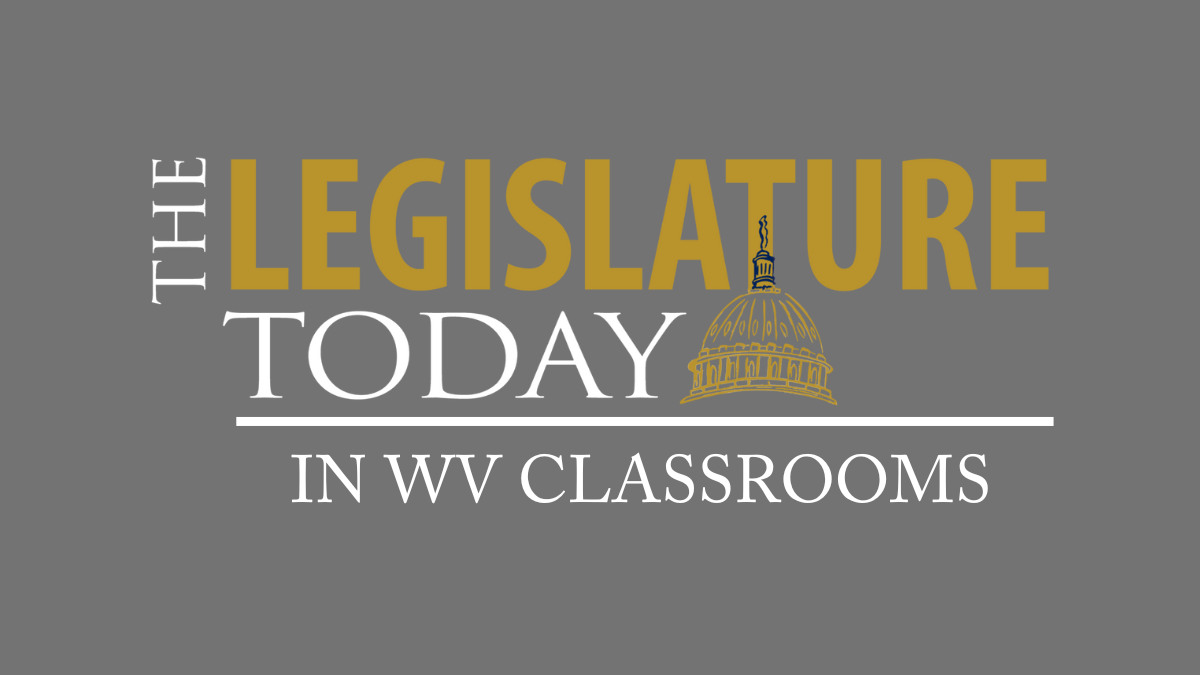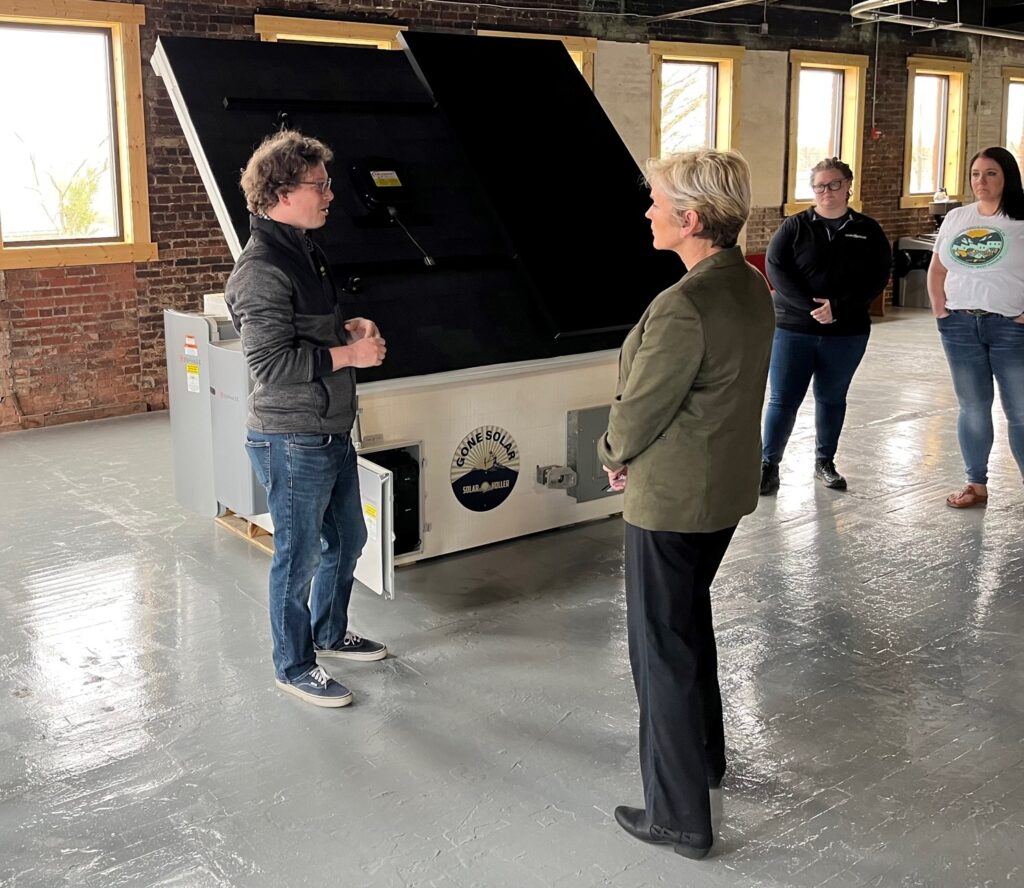Solar is expanding in West Virginia, thanks to shifts in federal and state policies. Curtis Tate spoke recently with Dan Conant, founder and CEO of Solar Holler, about solar’s growth in the Mountain State.
This interview has been edited for length and clarity.
Tate: What is the Solar For All Program and how does Solar Holler fit in?
Conant: So it’s a $7 billion program through EPA (Environmental Protection Agency) at the federal level. This all came through the Inflation Reduction Act from two years ago. And there was a competitive program across the country, for states and nonprofits to put together programs to help incentivize solar for low income families across the country. Solar shouldn’t be for just country clubs.
The West Virginia Office of Energy submitted an application that we supported to set up a program across West Virginia that’ll help buy down the cost of solar for families that really need it most. There were a couple of other programs in there, including solar for colleges and student housing across the state. And we’re really looking forward to implementing it or helping bring those projects to life in the future. We don’t have any direct involvement, more just that we’re really excited. Excited that West Virginia won over $100 million to really punch above our weight when it came to population.
Tate: The West Virginia Legislature didn’t take up the community solar bill you pushed for. Has anything changed since then?
Conant: The other piece that kind of dominated the solar sphere during the session was the Public Service Commission (PSC) case around FirstEnergy and net metering. So that got settled. I think the session was still in at that point. But at the end of March, the commission officially accepted a settlement that I had negotiated with FirstEnergy.
We have until the end of this year to get folks in under the existing rules. And then everybody gets grandfathered in for 25 years before the new program rolls out in January of next year. That’s probably top of mind for me as far as the most significant change for solar in the state right now.
Tate: The U.S. Department of Energy recently announced a 250-megawatt solar project in Nicholas County. That’s pretty big, isn’t it?
Conant: That is a really big deal. It’s getting cheaper and cheaper across the country. We’ve seen the technology continue to fall in price over the last couple of years, even while everything else was going up. I think it’s a harbinger of things to come.
Tate: What are the advantages of pairing batteries with solar? Does it help stabilize the grid?
Conant: Absolutely, because you can soak up the sun in the middle of the day and discharge the batteries in the evening, when everyone’s coming home. Over the course of the day, you have pretty consistent curves for how power is used. You get a little spike first thing in the morning when everyone’s waking up and then it’s all predictable. What batteries are allowing us to do is take that midday sun and shift when you use that energy into the evenings when people are coming home when you get those big surges in power demand.
On the small scale side, people are putting in storage because it’s honestly more dependable than the grid. Especially if you live up a holler somewhere, and the power goes out every time the wind blows, folks are putting in solar and battery systems to take them through multi-day outages in a way that the grid can’t. There’s other reasons. You can reduce how much power you draw from the grid at any given time. Because if you’re a big industrial or commercial user, you get charged for the highest peak power use over the course of the month, and you can use batteries to bring those peaks down. So there’s a bunch of different uses for them. But overall, what it’s going to do is allow us to use renewable energy when we want to, not just when it’s produced, and it also just kind of evens things out.
Tate: How much of the new investment in clean energy in West Virginia and other states has been spurred by the Inflation Reduction Act and the Infrastructure Investment and Jobs Act?
Conant: I don’t know the exact count on it. But there has been just a huge surge in manufacturing announcements in particular, and I’m still continuing to see existing panel manufacturers overseas announce new factories, like I just saw over the last couple of weeks down in North Carolina. I think that pace will probably slow down a little bit just because they’ll build all these factories, and then as panels and equipment start rolling off the lines, you’ve got to have time to soak it up and build it into the supply chain. But the investments that are being made, they’re going to keep pumping out equipment and panels and inverters and all the other stuff they’re making over the next 15, 20, 30 years.
We’ve been buying all our panels from a factory in Georgia for the last five years or so. And they’re going through a massive expansion of their facility right now. The electrical brains of the system are called the inverters, and we put one micro inverter on the back of each solar panel. Because of the Inflation Reduction Act, the manufacturer we use – they’re a California company, but they just opened up facilities in South Carolina and Wisconsin and Texas. So now, all of our inverters are coming out of South Carolina. And that’s been that way for the past year now.
Tate: Is there any concern that a change in the White House could roll back some of these policies? Or is the momentum too strong at this point?
Conant: I’d hate to see anything rolled back. I do think though, that at some point, the train has left the station. One of the really powerful things about the Inflation Reduction Act was extending solar and renewable energy off the coasts. It’s driving an incredible amount of investment in coal country. We’re seeing investments in West Virginia, we’re seeing investments in Kentucky and Texas and Wyoming and all across the country, in the areas of America that have powered the rest of the country. They are really benefiting from the IRA and we’re seeing this resurgence in manufacturing, so I have a hard time imagining a world where Congress would want to take that away.
Tate: How does West Virginia compare with other states in terms of solar development?
Conant: We’ve got a stronger industry here at this point than California does. With how everything’s shaken out between the net metering deal, West Virginia is infinitely better than what California has at this point. Essentially, we’re kind of in an upside-down world now where it’s easier to do solar in West Virginia than in California.
Solar Holler is an underwriter of West Virginia Public Broadcasting.
























